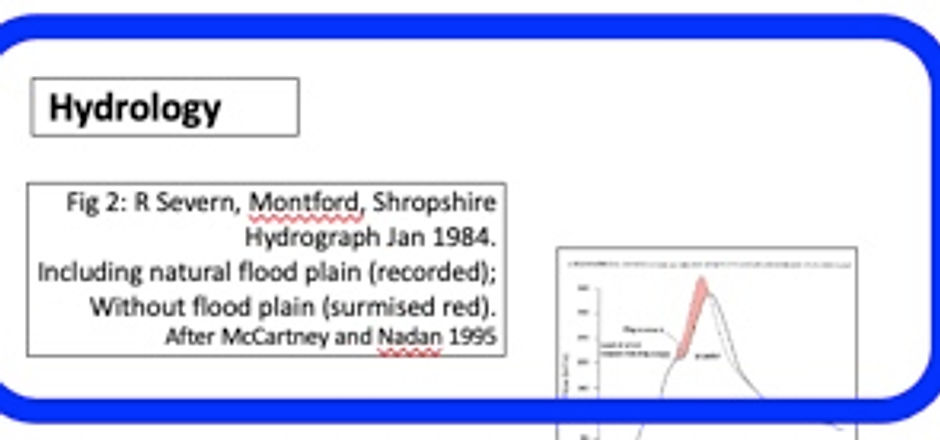Natural and scenarios on a numerical? Balancing alternative flood compensation on a Lowland valley floor
by Brian Durham, Archeologist and Campaigner for South Oxford Flood Action Group
First Published in Geophysical Research Abstracts Vol. 21, EGU2019-18499, 2019
Natural Flood Plain Management and Long Term Investment
Natural flood plain management - long term investment (Fig. 1): Release of UK’s `long term investment scenarios’ for flood management under climate change coincides with decision-time for a flood scheme in the Thames catchment, where the effect of such investment on areas of a natural flood plain can be visualised.
For background, UK Environment Agency (EA) has carried out 23 case studies on natural flood management (NFM) of rivers and flood plains (accessed 15/03/2019), following which NFM investment is projected as 7% of Flood and Coastal Erosion Risk Management (FCERM) over 50-years (long term investment scenarios (LTIS, Jacobs 2019m, Table 6). Conventional FCERM activities are projected as 84%, including `building and maintaining defences’ and `more realistic scenarios for development on the flood plain’, which by implication creates `areas benefiting from flood defences’(ABFEDs). Existing ABFFDs are illustrated on current Flood Maps for Planning, reproduced here for R Thames catchment (the term ABFFD is not used in the LTIS). An imminent River Thames scheme at Oxford (OFAS) is explored by this poster, seeking synergy between NFM and conventional FCERM investment.

Hydrology
Hydrology (Fig 2): For a natural valley floor, McCartney and Nadan (1995) presented comparative hydrographs for the R Severn at Montford, UK, with a ‘shoulder’ illustrating how the flood plain had absorbed the effect of peak flows (Fig. 2). They concluded: ‘The availability of naturalflood-plain storage significantly reduced the magnitude of major floods’. Their approach was refined by O’Sullivan et al (2012), who ‘generate[d] downstream flow hydrographs in a generalised river reach for definedupstream hydrographs encompassing a range of flows and duration’. They concluded that ‘in the 5-year to 50-year return period range, the floodplain provides a significant area for extra storage of water’.

Effect of long term investment on natural flood storage
(Fig. 3): In the R Thames catchment the Oxford Flood Alleviation Scheme (OFAS) offers a range of conventional investments (Fig. 3).
Each defended area displaces existing flood storage, which under planning and construction industry guidance (SFRAs, CIRIA C164) requires compensation (the Oxford total 352,575 m3 may exclude temporary defences, i.e. Areas 6 and 7). Options are: •Direct storage compensation (replacement volume is level-for-level);
•Indirect storage compensation (with `control structures’ Lancaster et al 2004, CIRIA C624, p 168. Exemplar Fig. 4b, Salford Scheme).
Not explicit in the CIRIA guidance, but proposed at Oxford is:
•No worsening elsewhere (NWE) compensation, verified by a numerical model (Fig. 4c and d). EA notes `the issue and its relevance to the research programme is fully understood’ Environment Agency 10/12/2018.
